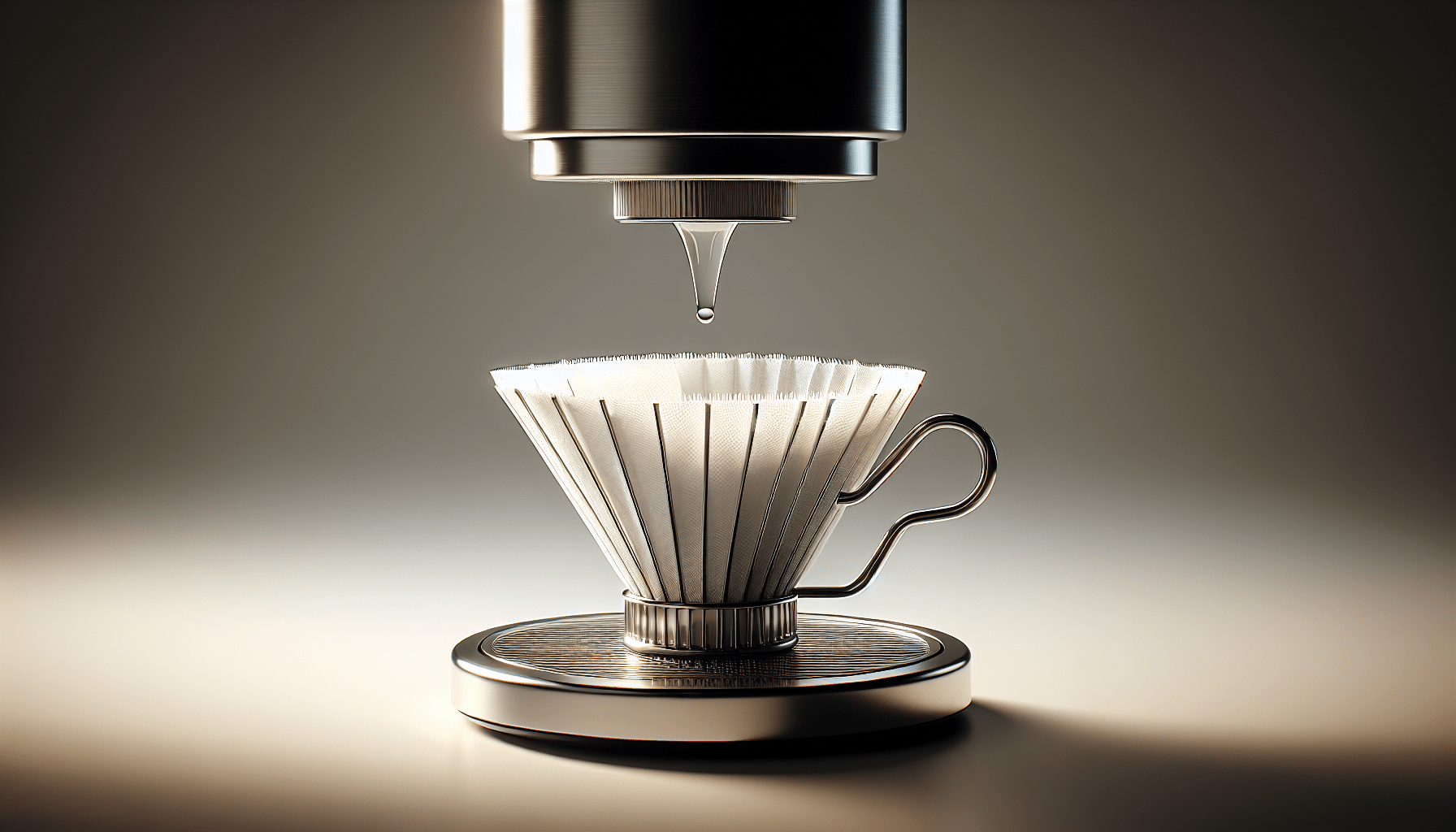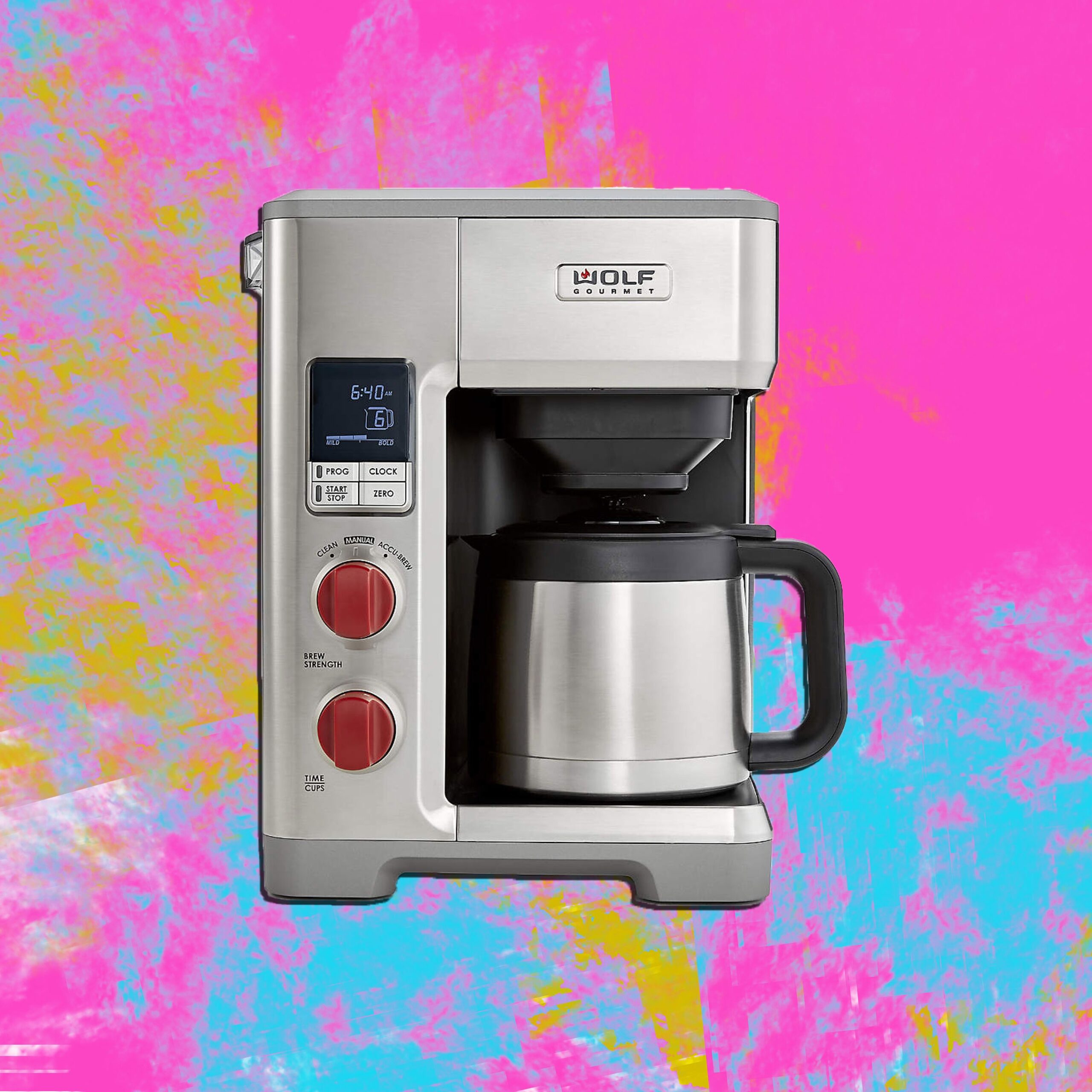So you’ve been enjoying your trusty drip coffee maker for quite some time now, but lately, you’ve noticed that the coffee doesn’t taste as great as it used to. Well, fret not, because the solution might just be a simple descaling process. Descaling your drip coffee maker can help remove the mineral buildup and residue that accumulates over time, ensuring that you always enjoy a delicious cup of joe. But how exactly do you go about descaling? Let’s dive in and find out!
What is descaling?
Descaling is the process of removing mineral deposits and buildup that accumulate over time in your drip coffee maker. These deposits, also known as scaling or limescale, are caused by minerals like calcium and magnesium that are present in hard water. Descaling is necessary to maintain the optimal performance of your coffee maker and ensure that your coffee tastes its best.
Explanation of descaling
When water is heated and passes through your coffee maker, minerals in the water can accumulate and form a coating inside the machine. This coating can affect the temperature and flow of water, resulting in slower brewing times and a weaker tasting coffee. Descaling helps to break down and remove these mineral deposits, restoring the machine’s efficiency and improving the flavor of your coffee.
Why descaling is necessary for drip coffee makers
Descaling is particularly important for drip coffee makers because their design makes them prone to mineral buildup. The heating element and pipes inside the machine can easily gather limescale, which can affect the water flow and the temperature of the brewing process. Regular descaling of your drip coffee maker ensures that it continues to function optimally and prolongs its lifespan.
When should I descale my drip coffee maker?
Signs that indicate the need for descaling
There are several signs that indicate your drip coffee maker may need descaling. If you notice that your coffee takes longer to brew than usual, or the flow of water slows down significantly, it is likely that mineral deposits are obstructing the machine. Additionally, if your coffee starts to taste off or slightly metallic, it could be a result of limescale buildup.
Frequency of descaling
The frequency at which you should descale your drip coffee maker depends on a few factors, including how often you use it and the hardness of your water. As a general guideline, it is recommended to descale your machine every three to six months. However, if you have particularly hard water or use your coffee maker daily, you may need to descale more frequently. Regular descaling helps to maintain the quality and performance of your machine.
Materials needed for descaling
To descale your drip coffee maker, you will need a few basic materials:
- Vinegar or descaling solution: Vinegar is a commonly used and effective descaling agent. Alternatively, you can use a commercial descaling solution specifically designed for coffee makers.
- Water: You will need water to dilute the descaling solution and rinse the coffee maker afterward.
- Cleaning cloth: A soft cleaning cloth or sponge will be useful for wiping down the exterior of the machine.
Step-by-step guide to descaling a drip coffee maker
Emptying and cleaning the coffee maker
Begin by emptying the coffee maker of any remaining water or coffee grounds. Dispose of the used coffee filter. It is a good idea to give the machine a quick wipe-down with a damp cloth to remove any surface dirt or residue. Make sure the coffee maker is turned off and unplugged before proceeding.
Preparing the descaling solution
If using vinegar, mix equal parts vinegar and water in a container. If using a descaling solution, follow the instructions on the product packaging for the proper dilution ratio. The mixture should be enough to fill the water reservoir of your coffee maker.
Running a descaling cycle
Pour the descaling solution into the water reservoir of your coffee maker. Place an empty coffee pot or carafe under the brew basket. Turn on the coffee maker and initiate a brew cycle as if you were making a pot of coffee. Allow the descaling solution to run through the machine completely.
Rinsing the coffee maker
After the descaling cycle is complete, empty the coffee pot or carafe and rinse it thoroughly. Fill the water reservoir with clean water and run a cycle without any coffee grounds to rinse out any remaining descaling solution. Repeat this rinsing process at least twice to ensure all traces of the descaling solution are removed.
Final cleaning and maintenance
Once you have completed the descaling and rinsing process, wipe down the exterior of the coffee maker with a clean, damp cloth. Pay attention to any hard-to-reach areas or crevices. Clean any removable parts, such as the coffee filter and carafe, with warm soapy water. Rinse them thoroughly and allow them to dry before reassembling the machine.
Alternative methods for descaling
Using citric acid
Citric acid is a natural descaling agent that can be used instead of vinegar or a commercial descaling solution. Mix one tablespoon of citric acid with one liter of water and follow the same descaling process outlined above.
Using baking soda
Baking soda can also be effective in removing mineral deposits from your coffee maker. Create a paste by mixing baking soda with water and apply it to the affected areas of the machine. Let it sit for a few minutes, then scrub gently with a soft brush or cloth. Rinse thoroughly afterward.
Using commercial descaling products
There are numerous commercial descaling products available specifically designed for coffee makers. These products often come in powder or liquid form and can be purchased from home appliance stores or online. Follow the instructions provided with the product for proper usage and dilution ratios.
Preventive measures to reduce scaling
Using filtered water
Using filtered or purified water can help reduce the buildup of minerals in your drip coffee maker. Investing in a water filter or using filtered water from a jug or pitcher can significantly decrease the frequency of descaling required.
Regularly cleaning the coffee maker
In addition to descaling, it is essential to clean and maintain your coffee maker regularly. This includes washing removable parts, such as the coffee filter and carafe, after each use and wiping down the machine’s exterior. A clean coffee maker is less likely to accumulate mineral deposits.
Avoiding leaving water in the reservoir for long periods
If you are not using your coffee maker for an extended period, make sure to empty the water reservoir. Leaving water in the machine can lead to the buildup of mineral deposits, even if the coffee maker is not in use. Emptying the reservoir helps prevent scaling and keeps your machine in better condition.
Importance of descaling drip coffee makers
Regular descaling of your drip coffee maker offers several benefits:
Improves coffee taste and quality
Mineral deposits can alter the flavor of your coffee, making it taste dull or slightly metallic. Descaling removes these deposits, allowing your coffee maker to brew at the optimal temperature, resulting in a better-tasting cup of coffee.
Extends the lifespan of the coffee maker
Mineral buildup can cause clogs and put strain on the internal components of your coffee maker. By descaling regularly, you remove these deposits and reduce the risk of malfunctions, ultimately prolonging the lifespan of your machine.
Prevents clogs and malfunctions
Limescale can block the flow of water through your coffee maker, resulting in slower brewing times or incomplete brewing cycles. Regular descaling prevents these clogs and ensures that your machine operates smoothly and efficiently.
Safety precautions during descaling
Unplugging the coffee maker
Before starting the descaling process, make sure the coffee maker is turned off and unplugged from the power source. This ensures your safety when handling water and cleaning solutions around electrical appliances.
Avoiding contact with hot surfaces
Coffee makers can become hot during the brewing process. To prevent burns or injuries, allow the machine to cool down fully before touching any parts or surfaces. Use caution when handling hot water or descaling solutions.
Proper disposal of descaling solution
After completing the descaling process, do not dispose of the used descaling solution down the drain. Vinegar and descaling solutions can be harmful to pipes and plumbing. Instead, follow local guidelines for proper disposal or consult with your local waste management authorities for guidance.
Common mistakes to avoid while descaling
Using too much descaling solution
It is crucial to follow the recommended dilution ratios when using vinegar or commercial descaling products. Using too much descaling solution can be ineffective and may lead to a lingering vinegar smell or taste in your coffee.
Neglecting to thoroughly rinse the coffee maker
After running a descaling cycle, it is essential to rinse the coffee maker thoroughly with clean water. Failing to do so may result in traces of the descaling solution remaining in the machine, affecting the taste of your coffee and potentially damaging the components.
Forgetting to clean removable parts separately
While descaling, it is easy to focus solely on the internal components of the coffee maker. However, it is equally important to clean removable parts, such as the coffee filter and carafe, separately. These parts can accumulate residue and oils that can affect the flavor of your coffee.
Frequently asked questions about descaling
Can I use apple cider vinegar instead of white vinegar?
Yes, apple cider vinegar can be used as an alternative to white vinegar for descaling your drip coffee maker. The acid content in apple cider vinegar helps to break down mineral deposits in the same way as white vinegar.
How long does the descaling process take?
The duration of the descaling process can vary depending on the severity of the mineral buildup and the specific instructions of the descaling agent used. On average, the descaling process, including the running of a descaling cycle and rinsing, can take approximately 30 to 45 minutes.
Is it safe to drink coffee after descaling?
Yes, it is safe to drink coffee after descaling your machine, as long as you have thoroughly rinsed the coffee maker after the descaling process. Ensuring that all traces of the descaling solution have been removed will prevent any lingering taste or odor in your coffee.




